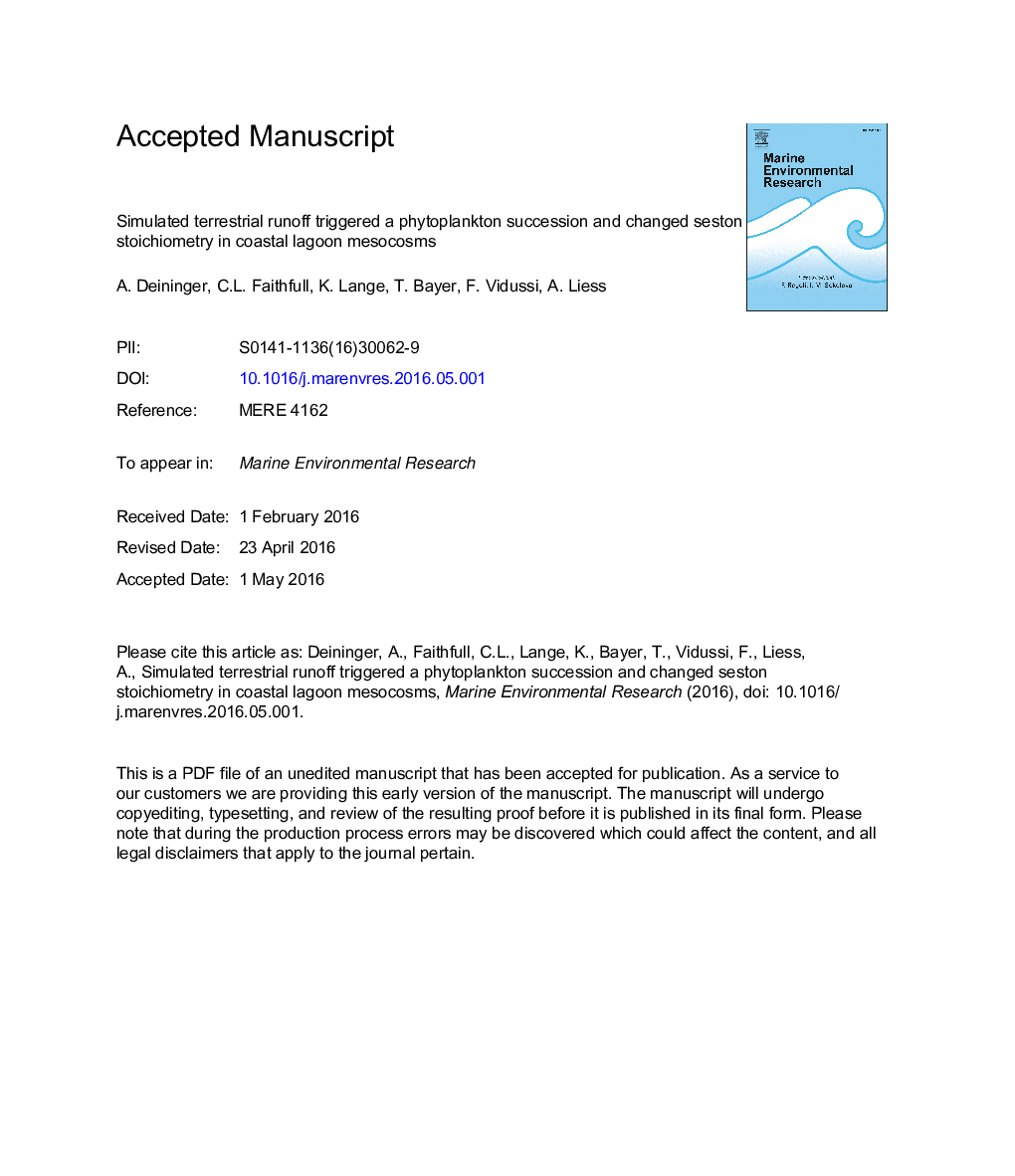| Article ID | Journal | Published Year | Pages | File Type |
|---|---|---|---|---|
| 6387555 | Marine Environmental Research | 2016 | 49 Pages |
Abstract
Climate change scenarios predict intensified terrestrial storm runoff, providing coastal ecosystems with large nutrient pulses and increased turbidity, with unknown consequences for the phytoplankton community. We conducted a 12-day mesocosm experiment in the Mediterranean Thau Lagoon (France), adding soil (simulated runoff) and fish (different food webs) in a 2Â ÃÂ 2 full factorial design and monitored phytoplankton composition, shade adaptation and stoichiometry. Diatoms (Chaetoceros) increased four-fold immediately after soil addition, prymnesiophytes and dinoflagellates peaked after six- and 12 days, respectively. Soil induced no phytoplankton shade adaptation. Fish reduced the positive soil effect on dinoflagellates (Scripsiella, Glenodinium), and diatom abundance in general. Phytoplankton community composition drove seston stoichiometry. In conclusion, pulsed terrestrial runoff can cause rapid, low quality (high carbon: nutrient) diatom blooms. However, bloom duration may be short and reduced in magnitude by fish. Thus, climate change may shift shallow coastal ecosystems towards famine or feast dynamics.
Keywords
Related Topics
Physical Sciences and Engineering
Earth and Planetary Sciences
Oceanography
Authors
A. Deininger, C.L. Faithfull, K. Lange, T. Bayer, F. Vidussi, A. Liess,
